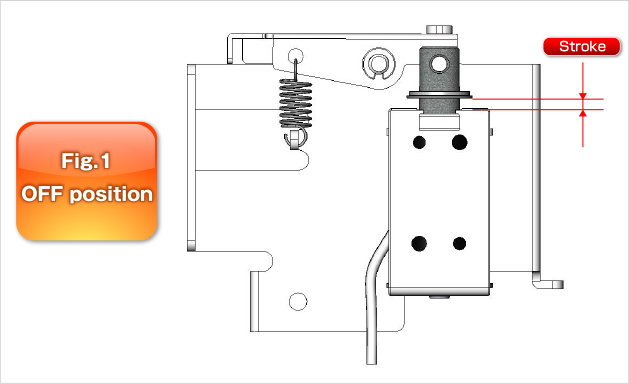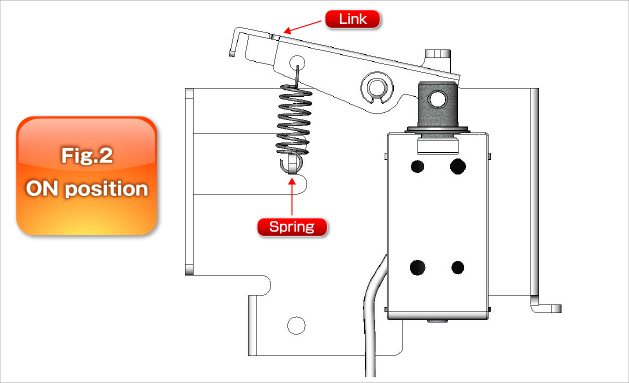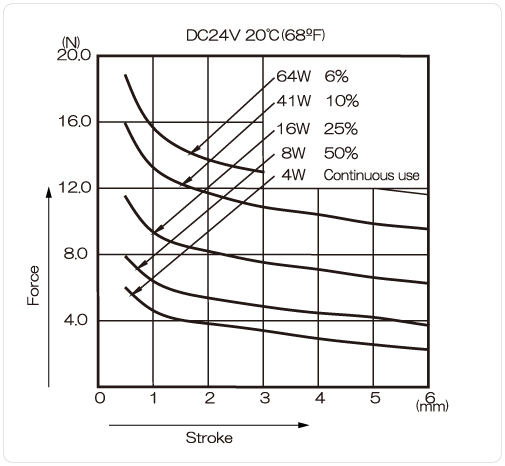Stroke and Force
The most important points when selecting a solenoid are stroke and Force.
Stroke measures the degree of movement of the metal shaft in the device and how far it has separated from the main body. When it is pulled in to the closest point of contact with the body, this is measured as a starting point of 0. Distance away from this point indicates the stroke. As stroke increases, the Force of the device decreases. In other words, the further away the shaft moves from the body, the lower Force becomes.
As an example, consider a mechanism where moving a link is achieved by combining the solenoid with a spring part. When going from an OFF position (fig. 1) to an ON position (fig. 2), the stroke distance and the Force necessary to pull the shaft both change. This relationship is vital in choosing the correct solenoid.
* The solenoid’s temperature will increase as current is applied over time. As the temperature increases, the attractive power of the device will decline, so please select a device with enough of a buffer to cover your needs.




